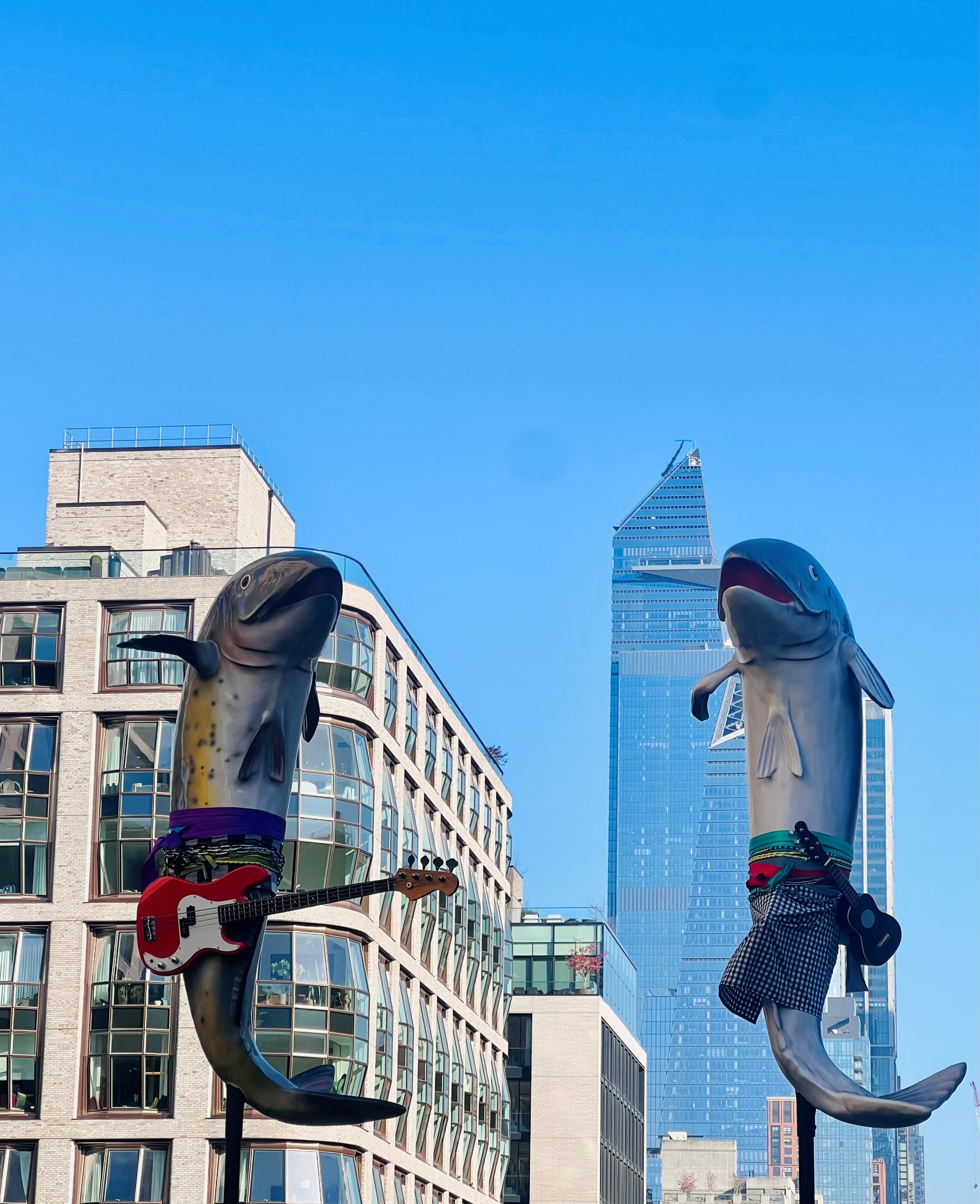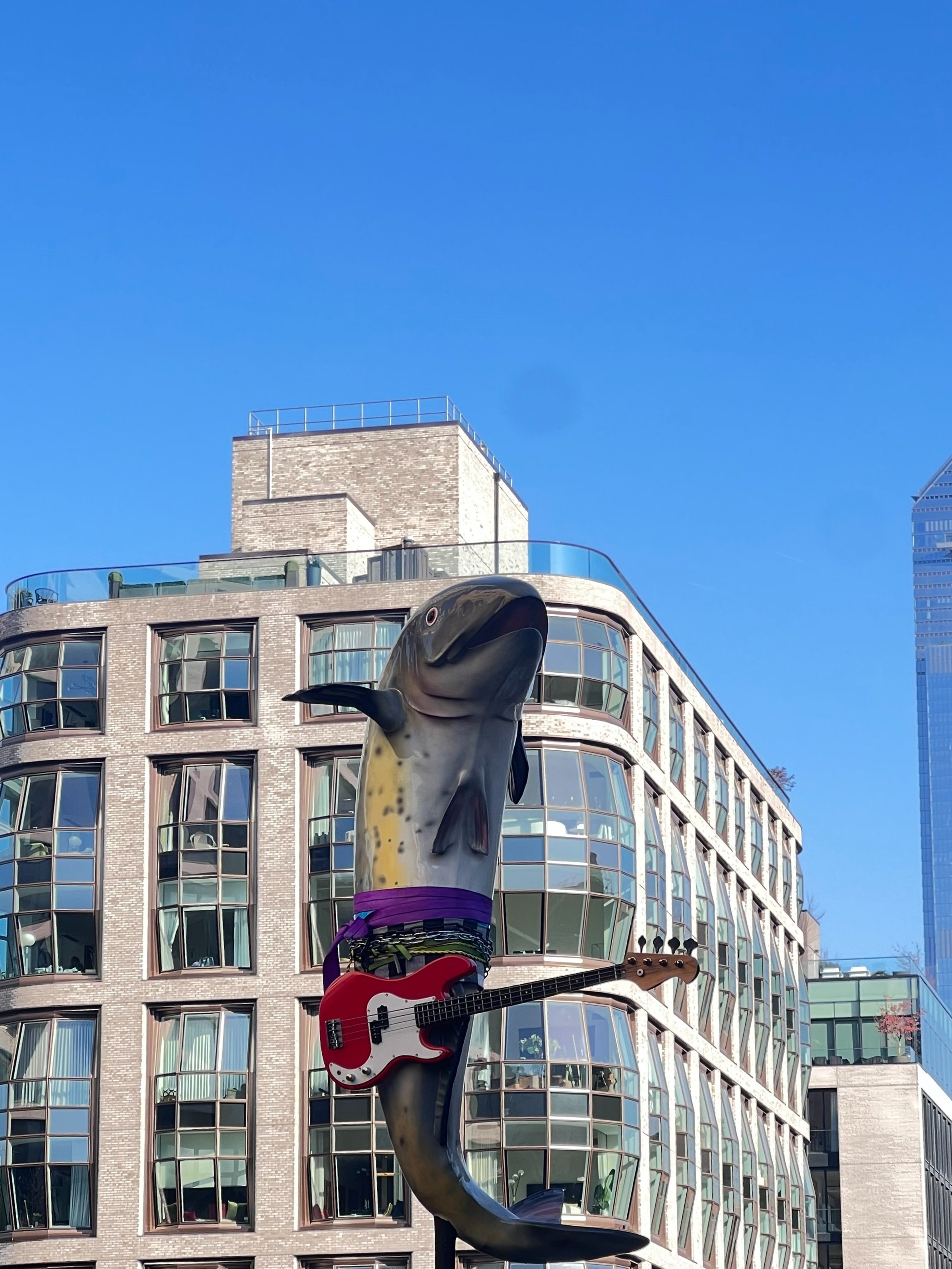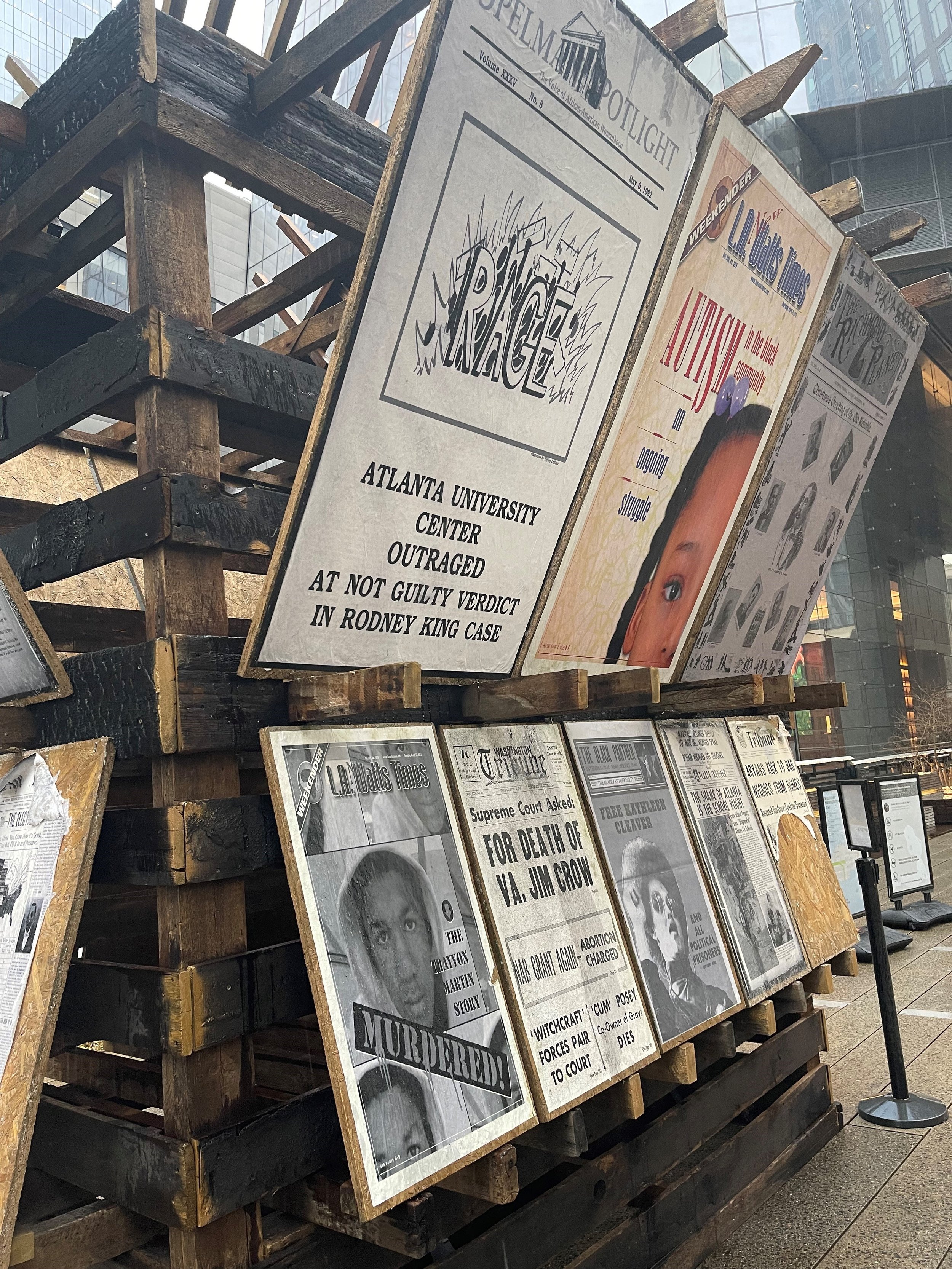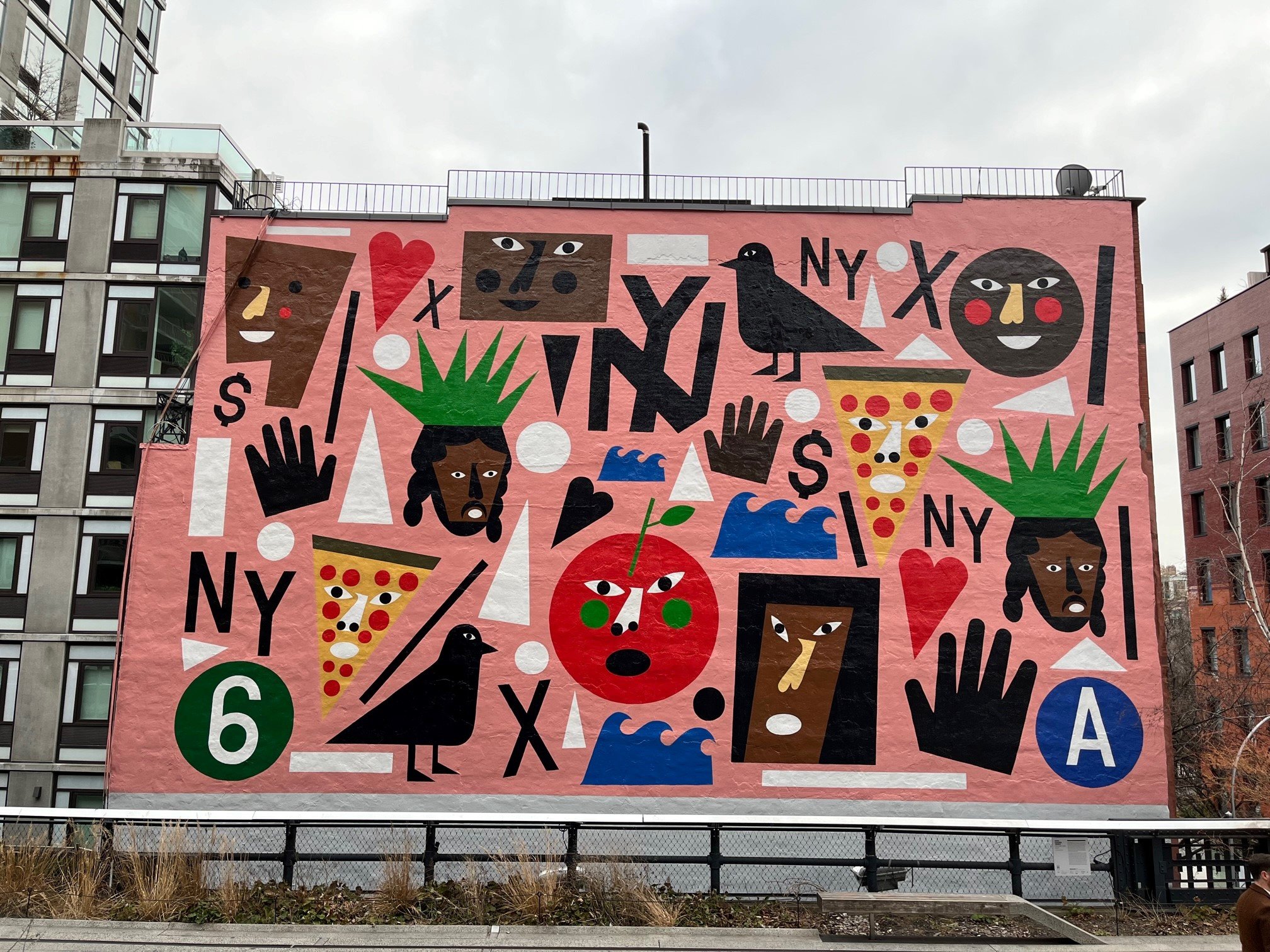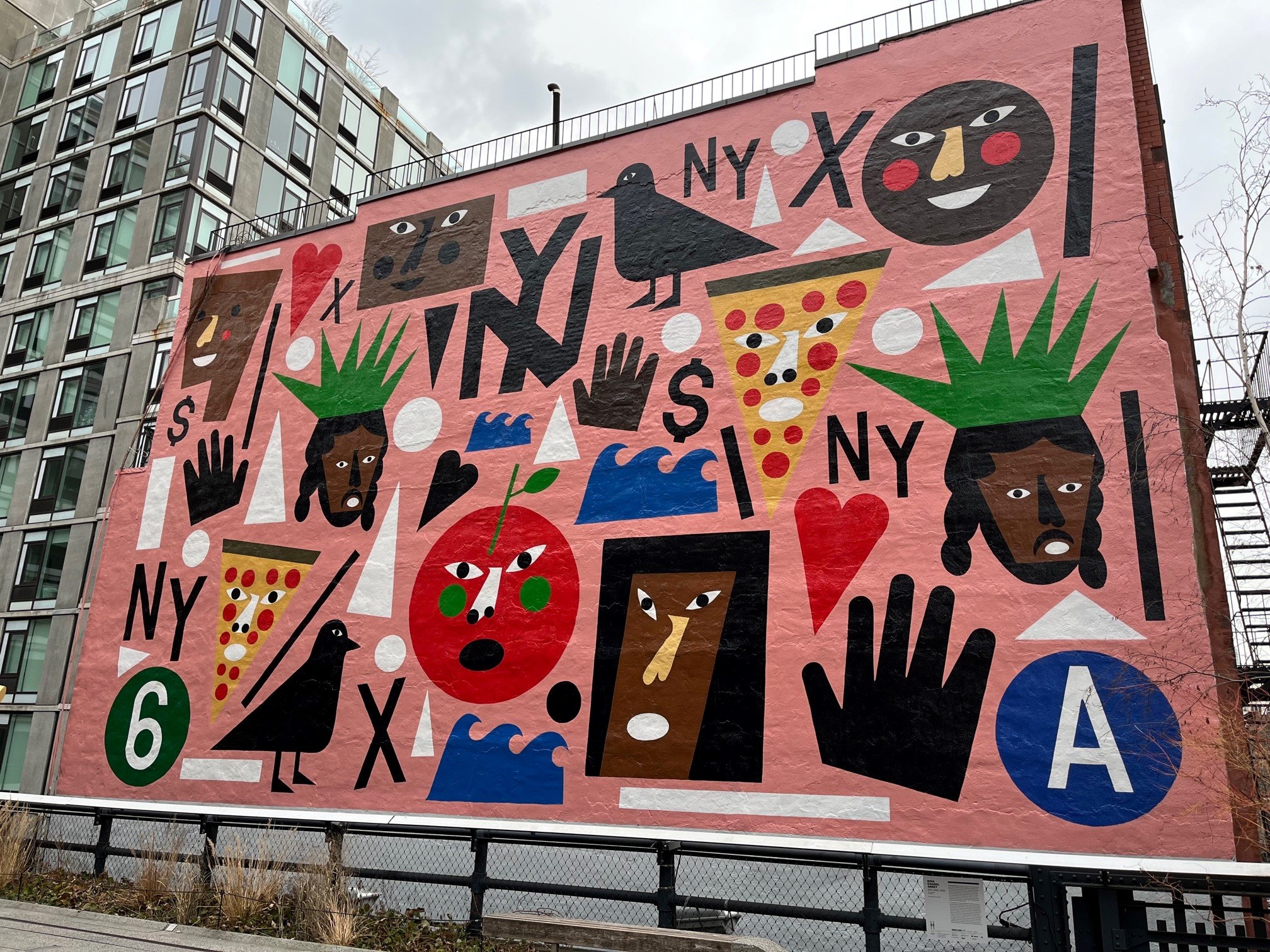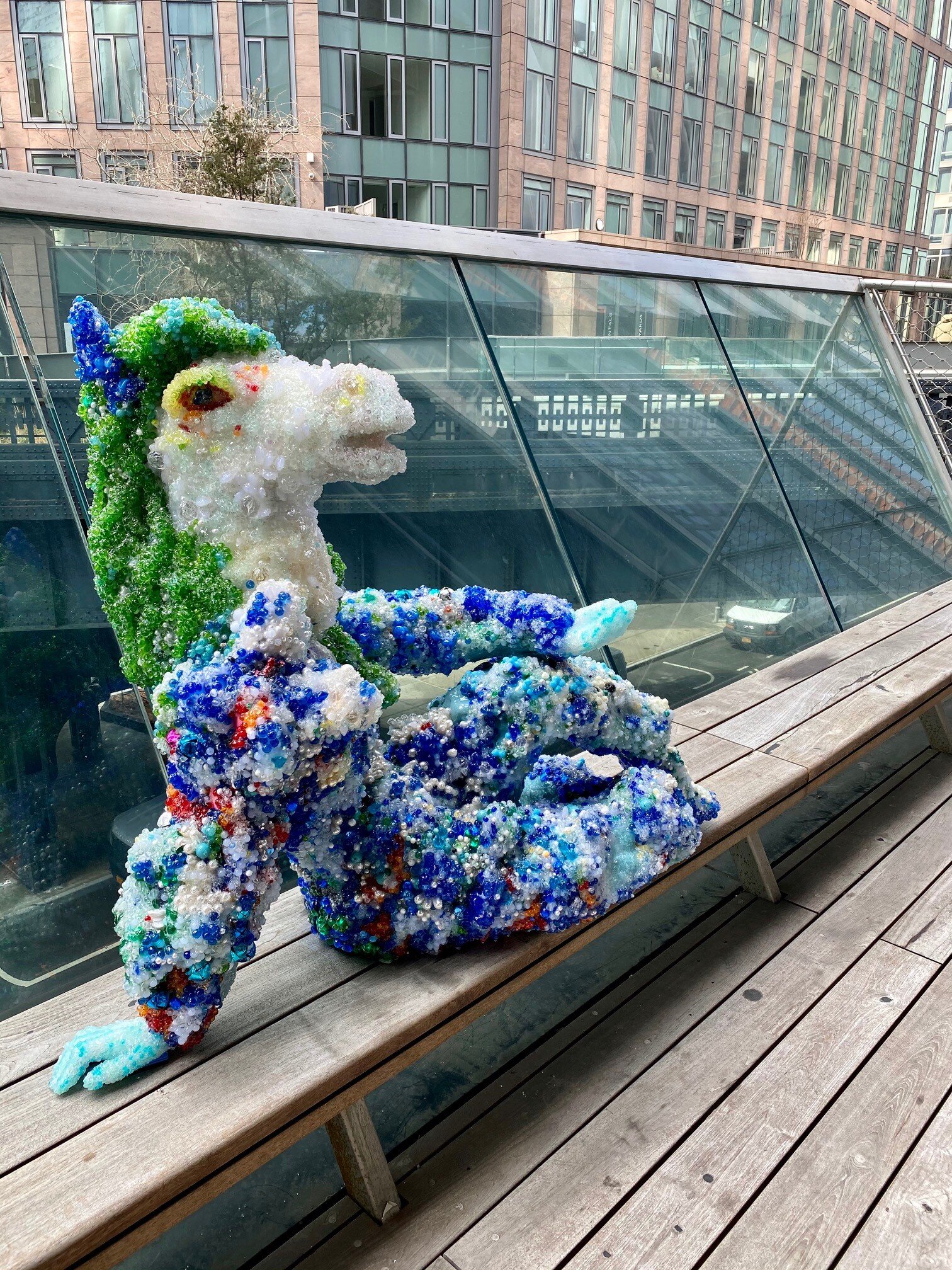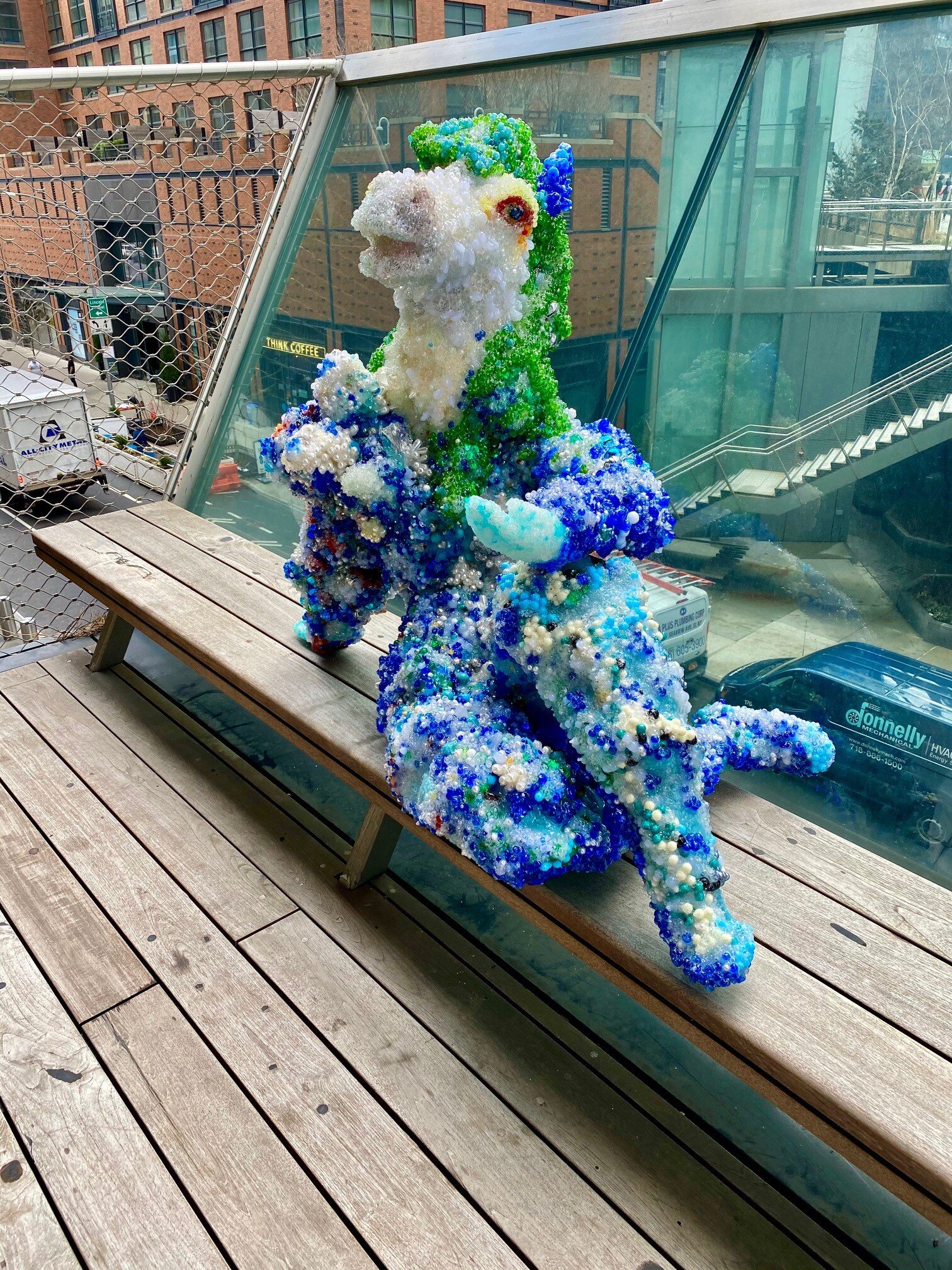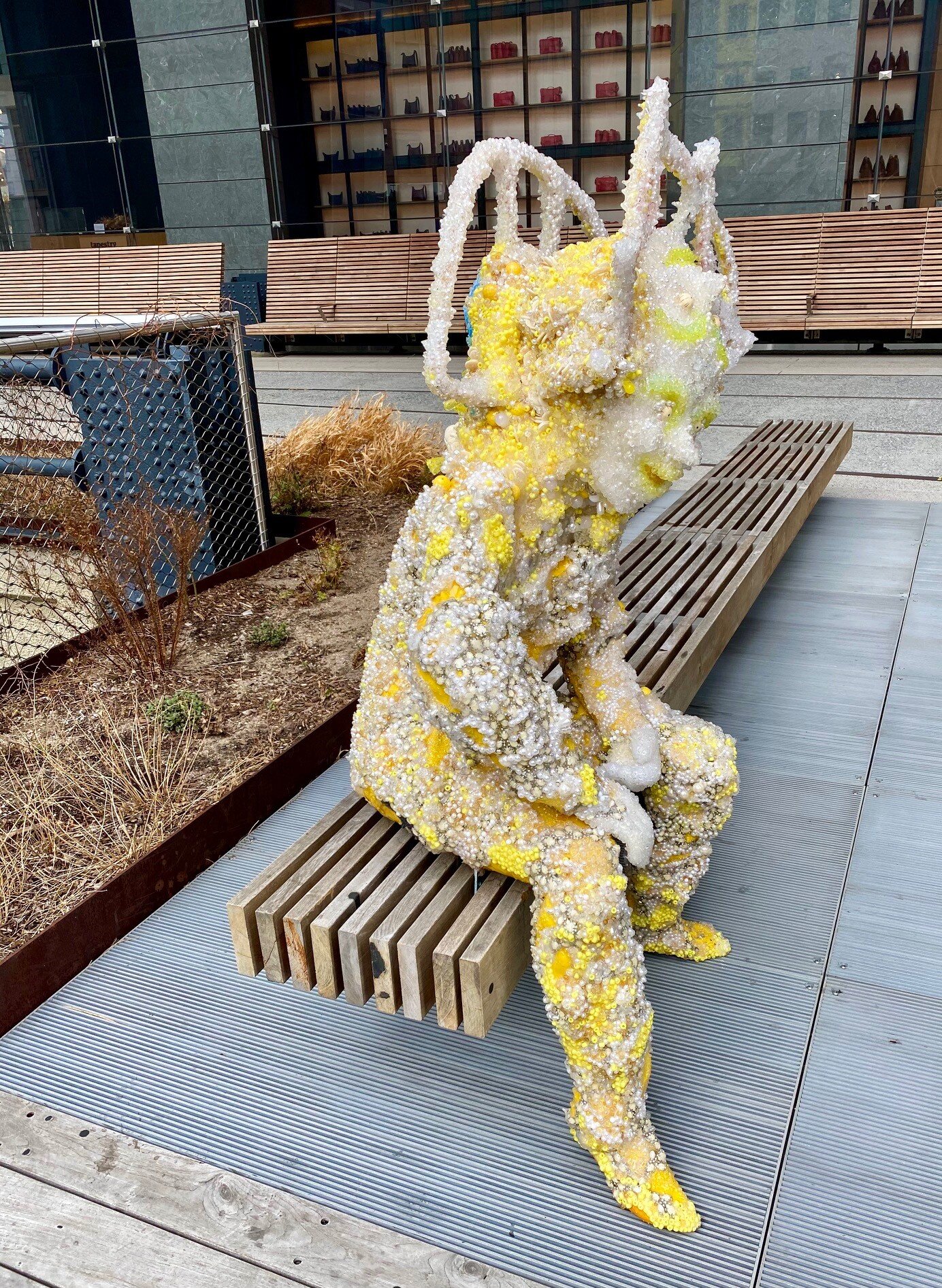We were walking through New York’s Chelsea neighborhood recently when we looked up to see a glowing candle, lighting our way. The mysterious light is part of the new art installation on the High Line, “The Sun Is a Flame That Haunts The Night” by Tai Shani. For this piece, Shani drew upon one of her recurring motifs, candlesticks, to create cartoon-like sculptures which glow at night. Though candles usually drip and melt, reminding us of the passing of time, these candles stay the same, unchanging on the High Line. The installation will light up the Highline through March 2026. We recommend art lovers catch these beautiful sculptures at night when they’re aglow.
“The Sun Is a Flame That Haunts The Night” by Tai Shani










